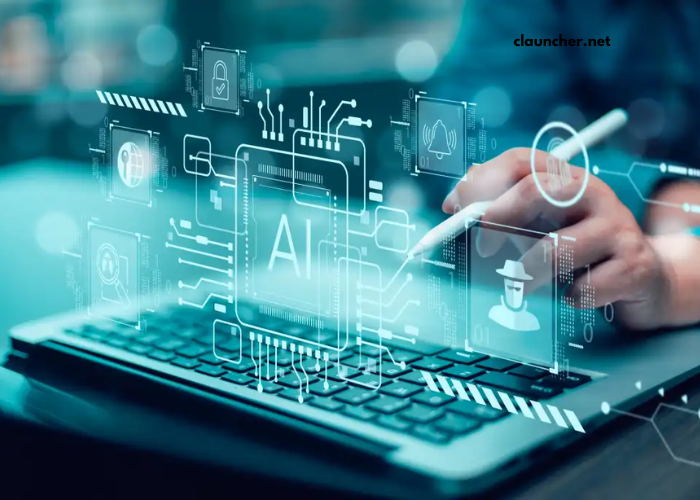
The tech world is always evolving, and each year brings exciting breakthroughs and innovations that reshape how we interact with the world. As we look toward the upcoming year, several emerging technologies are set to make waves across industries, from artificial intelligence to next-generation communication networks. In this article, we will explore the top tech innovations to watch this year, diving into their potential impact, applications, and how they can change our daily lives.
1. Artificial Intelligence and Machine Learning: The Future of Smart Automation
AI-Powered Automation in Business
Artificial Intelligence (AI) and Machine Learning (ML) are two of the most significant technological advancements in recent years. These technologies have been steadily growing, and 2025 promises to be a breakthrough year for them. AI’s ability to analyze massive datasets and make predictions is transforming industries from healthcare to finance.
In business, AI-driven automation is streamlining processes, reducing costs, and enhancing decision-making. Automation powered by AI can handle routine tasks like customer service chatbots, predictive analytics, and supply chain optimization. This frees up human workers to focus on more creative and strategic tasks.
Enhanced Consumer Interactions with AI
The use of AI is also extending to consumer-facing products. Virtual assistants like Siri, Alexa, and Google Assistant are already commonplace, but we can expect even more sophisticated AI-driven devices this year. These systems will become more intuitive, with the ability to understand context, anticipate needs, and offer personalized experiences.
2. 5G and Beyond: Revolutionizing Connectivity
Faster and More Reliable Networks
One of the most anticipated tech innovations of this year is the continued rollout of 5G networks. While 5G is already available in many regions, its potential is far from fully realized. With significantly faster speeds, lower latency, and greater capacity, 5G is poised to revolutionize everything from mobile gaming to autonomous vehicles.
Impact on Internet of Things (IoT)
The Internet of Things (IoT) is another area that will be heavily impacted by 5G. This high-speed network is expected to facilitate the growth of IoT devices, allowing for real-time communication between billions of connected devices. From smart homes to industrial automation, 5G will enable seamless connectivity and unprecedented data sharing.
Edge Computing: A Complement to 5G
Edge computing is another technology that is gaining traction alongside 5G. This innovation involves processing data closer to the source, reducing latency and improving performance. As more devices are connected through 5G, edge computing will play a crucial role in ensuring real-time processing and decision-making.
3. Quantum Computing: Unlocking Unprecedented Power
What is Quantum Computing?
Quantum computing is a revolutionary approach to computation that leverages the principles of quantum mechanics. Unlike classical computers that process data in binary form, quantum computers use qubits, which can represent both 0 and 1 simultaneously. This allows them to solve complex problems at speeds unimaginable for current computers.
Applications of Quantum Computing
While still in its early stages, quantum computing is expected to have a profound impact on industries such as cryptography, drug discovery, and financial modeling. For example, quantum algorithms can help break traditional encryption methods, leading to the development of more secure communication systems. Additionally, quantum computers have the potential to accelerate the discovery of new materials and drugs by simulating molecular structures with unprecedented accuracy.
Challenges and Progress in Quantum Computing
Despite the excitement surrounding quantum computing, there are still significant technical challenges to overcome. Quantum systems are highly sensitive to noise and interference, and developing stable, scalable quantum computers is a major hurdle. However, progress is being made, and experts predict that we could see practical applications within the next few years.
4. Augmented Reality (AR) and Virtual Reality (VR): Enhancing User Experiences
Immersive Experiences with AR and VR
Augmented Reality (AR) and Virtual Reality (VR) are two technologies that are becoming increasingly popular across various sectors. While VR immerses users in a completely virtual environment, AR overlays digital elements onto the real world. Together, these technologies are transforming the way we work, learn, and play.
In 2025, AR and VR are expected to evolve in terms of realism and interactivity. Advances in hardware and software will make these experiences more lifelike and responsive, opening new opportunities for industries such as gaming, education, and healthcare.
Applications of AR and VR in Business and Education
In the business world, AR and VR are being used for training, product design, and marketing. For example, companies can use VR simulations to train employees in complex or hazardous environments without the risk of real-world consequences. AR is being used to provide interactive product demonstrations, allowing customers to visualize how products will look in their homes before making a purchase.
In education, AR and VR offer students immersive learning experiences that enhance understanding and retention. Virtual field trips, interactive labs, and historical recreations are just a few examples of how these technologies are transforming the classroom.
Healthcare Benefits of AR and VR
AR and VR are also making significant strides in healthcare. Surgeons are using VR simulations for practice and planning complex surgeries, while AR is helping them visualize a patient’s anatomy during operations. Additionally, AR and VR have been found to help patients with mental health issues like anxiety, PTSD, and phobias through therapeutic virtual environments.
5. Robotics and Automation: Changing the Workforce
Advancements in Robotics
Robots have long been a staple of manufacturing, but this year we’re seeing the rise of more advanced robots that are capable of performing a wider range of tasks. In sectors like healthcare, logistics, and construction, robots are becoming indispensable tools that improve efficiency and reduce human error.
Humanoid robots and cobots (collaborative robots) are becoming more common in workplaces, where they assist humans rather than replace them. For example, in warehouses, robots can pick and pack items, while humans focus on tasks that require more cognitive skills.
Robots in Healthcare
In healthcare, robots are playing a more significant role in surgeries, rehabilitation, and patient care. Robotic-assisted surgeries, like those performed with the da Vinci surgical system, allow for greater precision and smaller incisions, leading to faster recovery times. Additionally, robots are being used to assist elderly patients with mobility and daily activities, making them more independent and improving their quality of life.
6. Blockchain and Cryptocurrencies: Redefining Financial Systems
Blockchain Beyond Cryptocurrency
Blockchain technology is best known for powering cryptocurrencies like Bitcoin and Ethereum, but its potential goes far beyond digital currencies. Blockchain’s decentralized, secure, and transparent nature makes it ideal for applications in industries ranging from supply chain management to healthcare to voting systems.
In the coming year, blockchain is expected to see wider adoption as organizations look for ways to enhance security, streamline processes, and reduce fraud. For example, blockchain can be used to create immutable records for supply chains, ensuring that goods are ethically sourced and reducing the risk of counterfeiting.
The Rise of Central Bank Digital Currencies (CBDCs)
Central banks around the world are exploring the possibility of launching their own digital currencies. These Central Bank Digital Currencies (CBDCs) would provide governments with a more efficient and secure way to conduct transactions while also reducing the reliance on traditional banks. CBDCs could revolutionize the global financial system by making payments faster, cheaper, and more accessible.
7. Sustainable Tech: Innovations for a Greener Future
Green Tech and Renewable Energy
As climate change becomes an increasingly urgent issue, the demand for sustainable technology is at an all-time high. Innovations in renewable energy, electric vehicles, and sustainable materials are expected to drive significant changes in the way we produce and consume energy.
Solar power, wind energy, and battery storage systems are becoming more efficient and cost-effective, enabling a transition to a cleaner, more sustainable energy grid. Additionally, electric vehicles (EVs) are becoming more affordable, with advancements in battery technology making them a viable alternative to traditional gasoline-powered cars.
Carbon Capture and Climate Tech
Carbon capture and storage (CCS) technology is another area that will see significant advancements this year. CCS involves capturing carbon dioxide emissions from industrial processes and storing them underground to prevent them from entering the atmosphere. As governments and businesses commit to reducing carbon footprints, CCS will play a key role in achieving these goals.
8. Biotechnology and HealthTech: Transforming Healthcare
Genomics and Personalized Medicine
Biotechnology continues to make strides in understanding the genetic basis of disease and developing personalized treatments. In 2025, we expect to see increased use of genomic data to tailor medical treatments to individuals, improving outcomes and reducing side effects.
Advances in gene editing technologies, such as CRISPR, are also opening up new possibilities for treating genetic disorders. With the ability to modify genes at the molecular level, scientists are working on developing cures for previously untreatable conditions.
Wearables and Health Monitoring Devices
HealthTech is also being revolutionized by wearables and health monitoring devices. Smartwatches and fitness trackers are now capable of monitoring vital signs like heart rate, oxygen levels, and blood glucose levels, providing users with real-time data on their health. In the future, these devices may be able to detect early signs of diseases, enabling earlier interventions and better overall health management.
Conclusion
The coming year promises to bring some of the most exciting technological innovations we’ve seen in recent history. From AI and 5G to quantum computing, AR/VR, robotics, and sustainable tech, the possibilities are endless. These innovations will not only improve our personal lives but also transform entire industries, leading to more efficient processes, greater connectivity, and better solutions to global challenges. As these technologies continue to evolve, we can expect to see even more groundbreaking advancements in the years to come. Keep an eye on these emerging technologies—they will shape the future in ways we are only beginning to understand.





